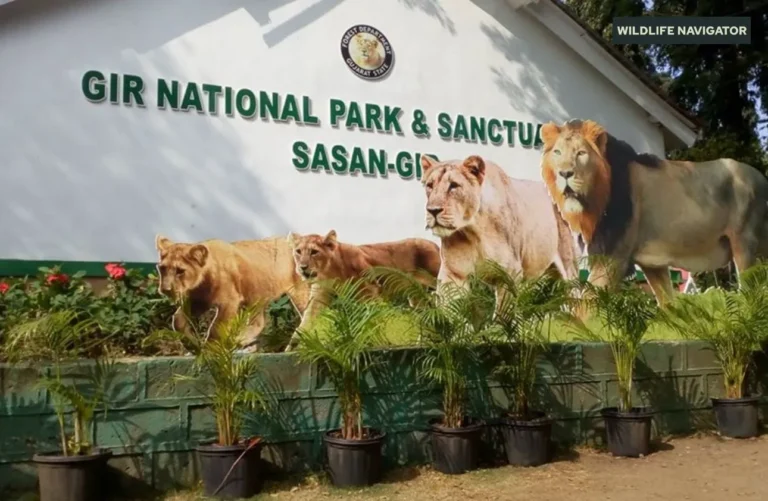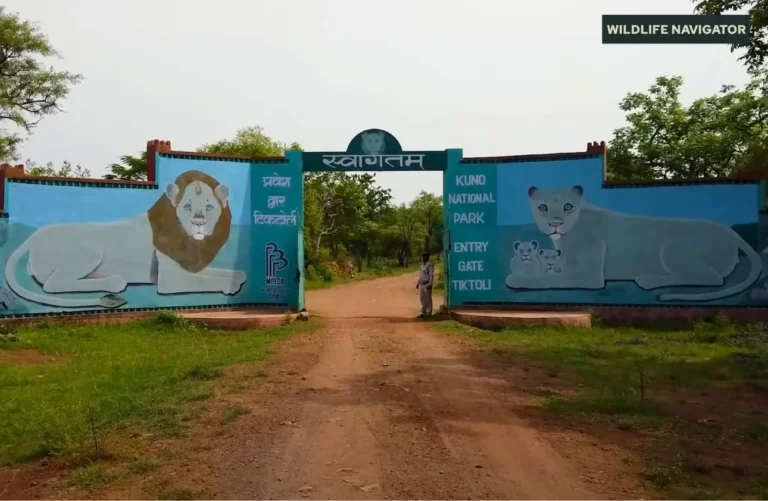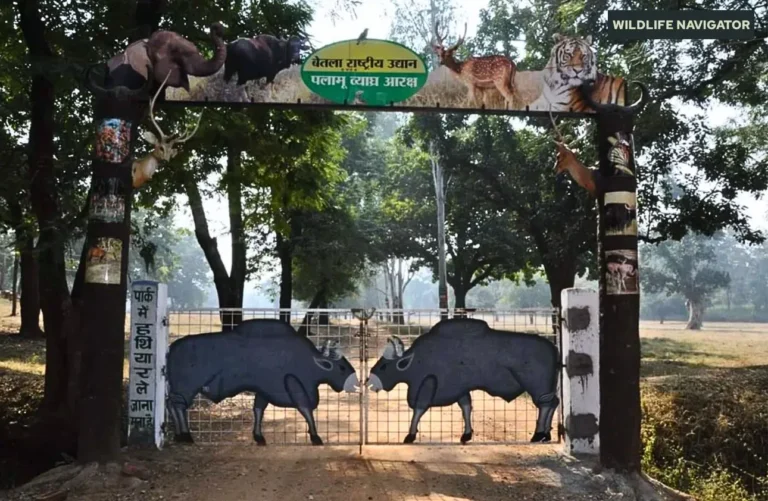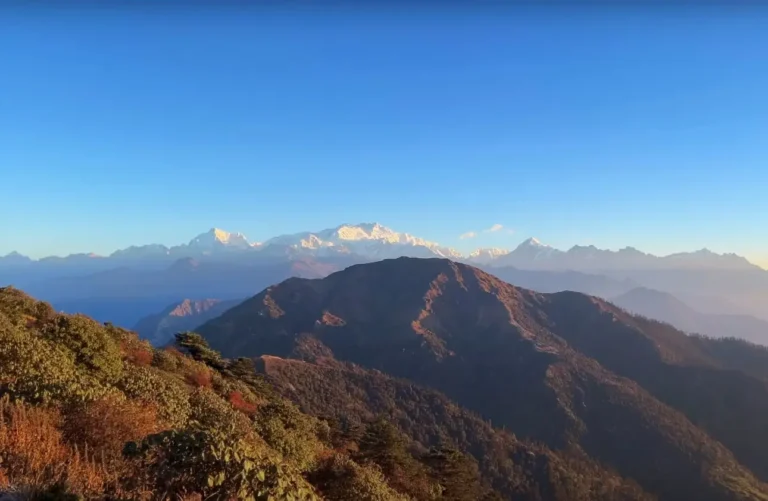Intanki National Park, Nagaland: Wildlife, Eco-Tourism & Attractions
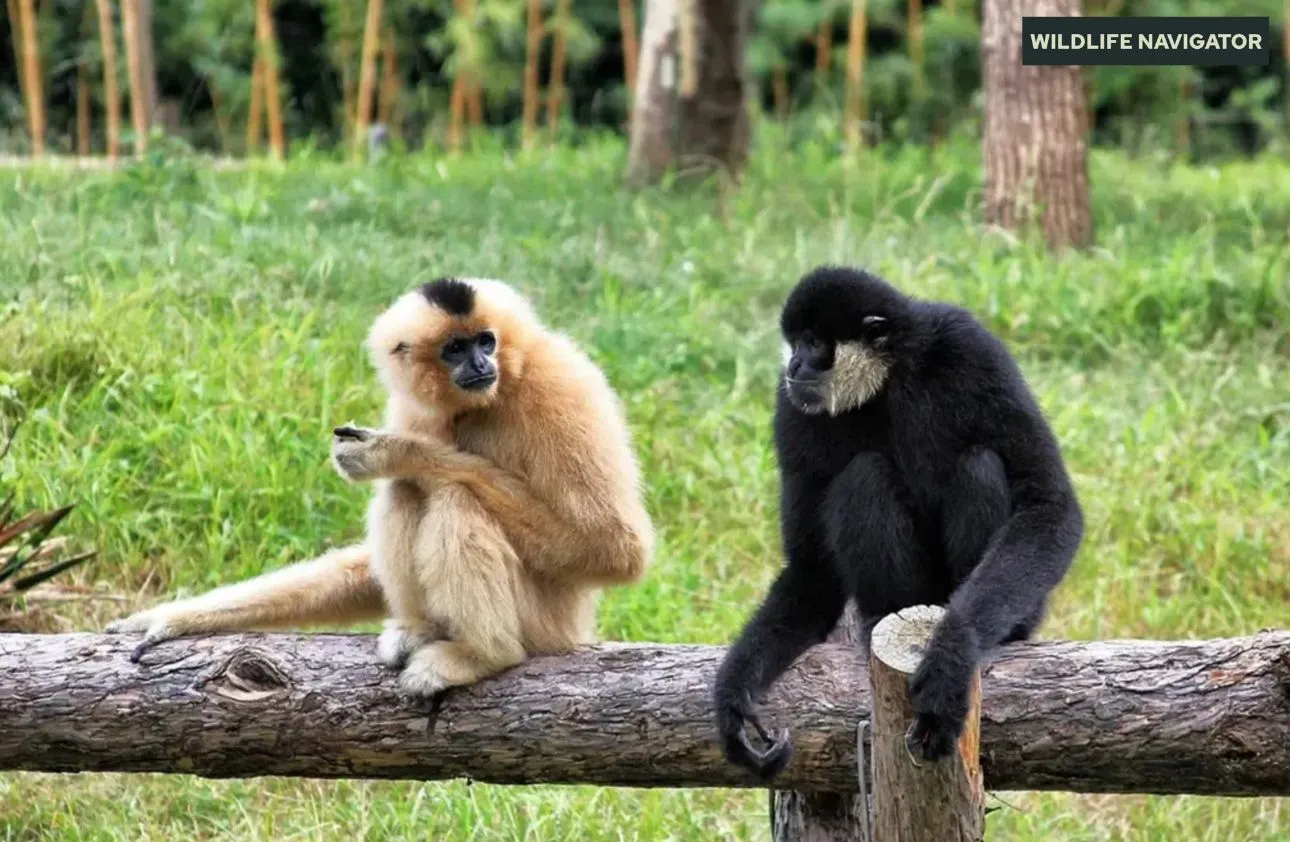
Intanki National Park, located in Nagaland’s Peren district, is one of the important protected areas of Northeast India. Covering a large expanse of hilly terrain and dense forests, the park plays a key role in conserving the unique biodiversity of the region. It is managed by the Nagaland Forest Department and offers visitors a glimpse into the state’s rich wildlife and natural heritage.
The park shelters a wide variety of species such as elephants, hoolock gibbons, hornbills, flying squirrels, and several reptiles, making it a recognised biodiversity hotspot. While it does not receive the same level of attention as some of the well-known tiger reserves in India, Intanki stands out for its ecological importance and relatively undisturbed wilderness.
As one of the lesser-explored national parks in India, Intanki also reflects the close connection between nature and local tribal communities. The nearby villages and eco-tourism initiatives add cultural value to a visit here, making it not only about wildlife but also about experiencing the traditions of Nagaland. For travellers looking for an offbeat destination in the Northeast, Intanki National Park provides an opportunity to discover both natural and cultural treasures in a single journey.
History, Geography & Landscape
Establishment and Historical Background
Intanki National Park was officially declared a national park in 1993, though it had earlier been recognised as a reserved forest. Its creation was a major step in strengthening Nagaland’s wildlife conservation efforts, particularly to safeguard endangered species like the hoolock gibbon and hornbills. Over time, it has become one of the state’s most valuable protected areas, ensuring that fragile ecosystems remain preserved despite increasing human pressures.
Terrain and Ecosystem
The park lies within Nagaland’s Peren district and spreads across rolling hills, valleys, and dense tropical forests. Its terrain is predominantly hilly, interspersed with small streams and river valleys that nourish the ecosystem. This diversity in landscapes supports a wide range of wildlife habitats, from thick evergreen forests to semi-deciduous patches that sustain herbivores, carnivores, and bird species alike.
Climate and Seasonal Variations
Intanki experiences a subtropical climate, with warm summers, heavy monsoon rains, and cool winters. The monsoon season, stretching from June to September, brings abundant rainfall that keeps the forest lush and thriving, though it can make access difficult. Winter, from November to February, offers the most comfortable weather for visitors, while summer months provide good visibility for wildlife spotting. These seasonal shifts not only shape the visitor experience but also influence the movement and behaviour of the park’s animals.
Flora and Fauna of Intanki National Park
Intanki National Park is a rich biodiversity hotspot in Nagaland, hosting a wide variety of plants and animals. Its dense forests and undisturbed habitats support many rare and endemic species, making it an important site for conservation and wildlife observation.
Mammals
The park is home to several significant mammals, including:
- Hoolock Gibbon – India’s only ape species, commonly seen swinging through the forest canopy.
- Asian Elephants – Occasionally spotted in the park’s valleys.
- Leopards and Civets – Elusive predators that maintain the ecological balance.
- Other Species – Barking deer, wild boars, and various primates contribute to the park’s mammalian diversity.
Birds
Intanki is a paradise for birdwatchers, with over 200 bird species recorded. Notable species include:
- Hornbills – Great Pied Hornbill and Wreathed Hornbill are highlights.
- Pheasants and Partridges – Like the Blyth’s tragopan.
- Other Birds – Kingfishers, woodpeckers, and a variety of migratory species during the winter months.
Reptiles
The park also hosts diverse reptile species, including:
- Snakes – Both venomous and non-venomous species inhabit the forest floor and trees.
- Lizards and Geckos – Common in undergrowth and rocky areas.
- Turtles and Freshwater Species – Found in the streams and small rivers within the park.
Trees and Vegetation
Intanki’s forests are a mix of tropical and sub-tropical species:
- Evergreen Trees – Oaks, magnolias, and laurels dominate the higher elevations.
- Bamboo and Cane – Provide food and shelter for many animals.
- Medicinal Plants and Shrubs – Used traditionally by local tribes.
Flowers and Seasonal Blooms
The park features a variety of flowering plants, many of which bloom seasonally:
- Wild Orchids – Especially in the moist forest areas.
- Rhododendrons – Add color during spring.
- Other Wildflowers – Numerous species attract pollinators like bees and butterflies.
Intanki’s combination of mammals, birds, reptiles, and rich plant life makes it a unique ecological treasure in Northeast India, providing excellent opportunities for wildlife enthusiasts, researchers, and photographers.
Safari Experience, Entry Fees & Park Zones
Intanki National Park offers visitors a chance to explore its forests and wildlife through guided tours and eco-friendly safaris. While the park is not as commercialized as other national parks in India, it provides a unique, offbeat wildlife experience, making it ideal for nature enthusiasts and photographers.
Types of Safari and Tours
Visitors can explore the park primarily through guided walking trails and trekking routes, which allow close encounters with the flora and fauna. Jeep or canter safaris are occasionally arranged by local forest authorities for groups, especially in areas where the terrain permits vehicle access. These safaris offer opportunities to spot hoolock gibbons, hornbills, elephants, and other wildlife while enjoying the serene forest environment.
Park Zones and Highlights
Intanki is divided into several zones based on terrain and vegetation, although official “safari zones” are not rigidly defined. The valley regions are ideal for elephant sightings, while the forest canopy areas are best for observing gibbons and birds. Streams and riverine areas attract a variety of reptiles and smaller mammals. Local guides often suggest routes depending on the time of year and the wildlife species visitors hope to see.
Entry Fees and Booking
Entry to Intanki National Park is regulated by the Nagaland Forest Department, and visitors need to register at the park office. Fees are generally modest, with separate charges for Indians, foreigners, and camera equipment. Booking is recommended in advance through the forest department or local tour operators, especially for guided safaris or trekking experiences.
Safari Timings and Guidelines
The park is open to visitors from early morning until late afternoon, with early morning hours being the best for wildlife sightings. Visitors are advised to maintain silence, follow the guide’s instructions, and avoid disturbing the animals. Photography is encouraged, but flash and loud noises should be avoided to protect sensitive wildlife.
Intanki National Park’s safari experience combines adventure and conservation awareness, offering a peaceful way to explore one of Nagaland’s most important natural areas while observing its rich biodiversity up close.
Best Time to Visit Intanki National Park
The best time to visit Intanki National Park largely depends on the type of experience you are seeking.
Winter (November to February)
Winter is the most comfortable season for visiting, with cool and pleasant temperatures ranging between 10°C and 20°C. The weather is ideal for trekking and wildlife spotting, as animals are more active during the day. Birdwatchers can also spot migratory species arriving in the region.
Summer (March to May)
Summer brings warmer temperatures, making early mornings the best time for safaris and trekking. The forest remains lush, and wildlife sightings are common in the cooler hours of the day.
Monsoon (June to September)
During the monsoon, heavy rainfall rejuvenates the forests, creating vibrant landscapes. However, access to certain trails may be restricted, and wildlife can be harder to spot due to dense foliage.
Overall, October to February is considered the ideal window for visiting Intanki National Park. This period offers a combination of comfortable weather, better chances of spotting mammals, birds, and reptiles, and easier access to trails, making the visit both safe and enjoyable.
How to Reach & Getting Around
Intanki National Park, located in Nagaland’s Peren district, is relatively offbeat, so planning your travel in advance is essential. The park is accessible via air, rail, and road, with local transport options available for reaching the park and exploring its trails.
By Air
The nearest airport is Dimapur Airport, approximately 120 km from the park. Dimapur is well-connected with regular flights from major Indian cities like Delhi, Kolkata, and Guwahati. From the airport, visitors can hire taxis or pre-arranged vehicles to reach Intanki National Park.
By Train
The nearest railway station is Dimapur Railway Station, which connects Nagaland to Assam and other northeastern states. Trains from major cities like Guwahati, Kolkata, and Delhi are available, though the frequency is lower than in other parts of India. From the station, taxis or buses can be used to reach the park.
By Road
Intanki is accessible via NH129A and local highways. The drive offers scenic views of hills, rivers, and forests. State-run buses, shared taxis, and private cabs are available from nearby towns like Peren and Dimapur.
Local Transport and Guides
Within the park, the best way to explore is on guided trekking trails or eco-tours arranged by the forest department. Local guides provide insights into flora, fauna, and cultural aspects, making the visit more informative and safe. For remote areas, walking or trekking is recommended, as vehicle access is limited.
Planning transport in advance ensures a smoother experience and maximizes your time for wildlife spotting and enjoying the natural beauty of Intanki National Park.
Accommodation, Dining & Stay Options
Though Intanki National Park is relatively offbeat, visitors have several options for staying nearby, ranging from government lodges to eco-camps and budget hotels. Staying close to the park ensures easy access for safaris and guided treks.
Government Forest Lodges
The Nagaland Forest Department manages forest lodges near Intanki National Park. These lodges provide basic amenities, clean rooms, and guided tours. They are ideal for travellers seeking a comfortable yet nature-oriented stay at reasonable rates. Booking in advance through the forest office is recommended, especially during peak visiting seasons.
Eco-Camps and Homestays
For a more immersive experience, several eco-camps and homestays are available in nearby villages. These accommodations allow visitors to experience local tribal culture while staying close to nature. Many homestays offer home-cooked meals and guided treks inside the park, giving a personalized touch to the visit.
Budget and Mid-Range Hotels
Towns like Peren and Dimapur have budget and mid-range hotels with basic facilities, including Wi-Fi, laundry, and transport arrangements to the park. These are suitable for travellers who prefer staying in towns while making day trips to Intanki.
Dining Options
Within or near the park, dining options are limited, so visitors often rely on lodge meals or home-cooked food at eco-camps. Local restaurants in Peren and nearby villages serve traditional Naga cuisine, including rice, bamboo shoot dishes, smoked meats, and local vegetables, providing an authentic culinary experience.
Travel Tips, Facilities & Visitor Guidelines
Exploring Intanki National Park requires some preparation, as it is an offbeat destination with limited infrastructure. Following these tips and guidelines ensures a safe, enjoyable, and responsible visit.
Clothing and Essentials
- Lightweight, breathable clothing for daytime trekking.
- Warm layers for early mornings and winter months.
- Comfortable trekking shoes or boots with good grip.
- Hats, sunglasses, and rain gear during monsoon season.
- Insect repellent, sunscreen, and a basic first-aid kit.
Facilities Available
- Basic amenities are available at forest lodges and eco-camps.
- Drinking water and restrooms are limited inside the park; carry your own supplies.
- Local guides are available at the park office to accompany visitors.
- Some lodges provide maps, trekking information, and emergency contacts.
Safety Tips
- Always follow the instructions of guides and park authorities.
- Maintain a safe distance from wildlife; do not attempt to feed or approach animals.
- Avoid trekking alone, especially in dense forest areas.
- Be cautious of slippery trails during the monsoon season.
Photography and Conduct
- Photography is allowed, but avoid using flash near animals.
- Maintain silence while on trails to avoid disturbing wildlife.
- Do not litter; carry all waste back to your accommodation.
- Respect local communities and their traditions when visiting nearby villages.
Safari Rules
- Stick to designated trails or zones advised by the forest department.
- Follow timing restrictions; early mornings and late afternoons are ideal for wildlife spotting.
- Avoid making loud noises or sudden movements that can scare animals.
By following these guidelines, visitors can enjoy a safe and responsible experience while contributing to the conservation of Intanki National Park.
Nearby Attractions, Culture & Suggested Itineraries
Intanki National Park is surrounded by scenic landscapes, cultural hubs, and other natural attractions in Nagaland, making it ideal for combining wildlife exploration with cultural experiences.
Nearby Wildlife and Natural Attractions
- Dzukou Valley – Famous for its rolling meadows, seasonal flowers, and trekking trails, located around 80 km from Intanki.
- Japfu Peak – The second-highest peak in Nagaland, offering panoramic views and adventure trekking opportunities.
- Local Rivers and Streams – Perfect for birdwatching and observing freshwater ecosystems.
Tribal Culture and Local Communities
The Peren district is home to various Naga tribes whose traditions and lifestyles have been preserved over centuries. Visitors can experience:
- Traditional crafts and handlooms.
- Local festivals, dances, and music, particularly during harvest season.
- Interaction with villagers to learn about eco-tourism initiatives and conservation practices.
Adventure Activities
- Trekking – Well-marked trails inside the park and in the surrounding hills.
- Birdwatching – Ideal for spotting hornbills, migratory species, and endemic birds.
- Camping – Eco-camps near the park provide an immersive forest experience.
Suggested Itineraries
2-Day Itinerary:
- Day 1: Arrive at Dimapur or Peren → travel to Intanki → guided trekking and wildlife spotting.
- Day 2: Morning birdwatching → visit nearby villages → return to Dimapur/Peren.
3-Day Itinerary:
- Day 1: Arrival and park exploration.
- Day 2: Trekking to remote zones, wildlife and birdwatching.
- Day 3: Visit Dzukou Valley or Japfu Peak → cultural interactions with local tribes → depart.
Combining Intanki National Park with nearby natural and cultural sites provides a well-rounded experience of Nagaland’s wildlife, landscapes, and heritage.
Conservation & Importance of Intanki National Park
Intanki National Park plays a crucial role in preserving Nagaland’s biodiversity and supporting conservation efforts in Northeast India. Its rich ecosystems and unique species make it an important area for wildlife protection and ecological research.
Ecological Significance
The park protects a wide range of habitats, from tropical and sub-tropical forests to river valleys, which support mammals like hoolock gibbons and elephants, as well as numerous bird, reptile, and plant species. Its forests serve as a vital corridor for wildlife movement and help maintain ecological balance in the region.
Role in Regional Conservation
Although Intanki is not a Project Tiger reserve, it contributes indirectly to broader conservation goals, complementing efforts in other tiger reserves in India by protecting predator-prey ecosystems and endangered species. The park is also part of regional biodiversity initiatives that aim to preserve endemic and rare flora and fauna.
Ongoing Conservation Efforts
The Nagaland Forest Department, along with local NGOs and community groups, is involved in:
- Monitoring and protecting wildlife populations.
- Preventing poaching and illegal logging.
- Promoting eco-tourism as a sustainable income source for nearby communities.
How Visitors Can Support
Tourists can contribute to conservation by:
- Following park rules and minimizing environmental impact.
- Participating in guided eco-tours and educational programs.
- Supporting local homestays, handicrafts, and community-led initiatives.
By protecting its forests, species, and cultural heritage, Intanki National Park remains a key area for ecological preservation in Northeast India and serves as a model for combining wildlife conservation with responsible tourism.
FAQs: Intanki National Park
1. Which is the best time to visit Intanki National Park?
The ideal time is October to February, when the weather is cool and wildlife sightings are more frequent.
2. How can I book safari or guided tours?
Booking can be done through the Nagaland Forest Department or local tour operators. Advance registration is recommended.
3. Which animals are commonly seen in the park?
Visitors often spot hoolock gibbons, elephants, hornbills, civets, and various reptiles.
4. Is Intanki National Park family-friendly?
Yes, the park is suitable for families, though trekking and forest trails may require supervision for children.
5. What is the nearest airport and railway station?
Dimapur Airport and Dimapur Railway Station are the closest, both approximately 120 km from the park.
